Themed collection Photoelectron spectroscopy and the future of surface analysis

Concluding remarks: Photoelectron spectroscopy and the future of surface analysis
Three different directions have evolved during the last decade and will become even more essential in the future to come and these are in situ and operando approaches, interface probing and ultrafast time resolved measurements.

Faraday Discuss., 2022,236, 528-544
https://doi.org/10.1039/D2FD90028A
Spiers Memorial Lecture: prospects for photoelectron spectroscopy
Recent advances in photoelectron spectroscopy are reviewed, focussing on advances in in situ and time-resolved measurements, and in extending the sampling depth of the technique. The future prospects for each are considered.

Faraday Discuss., 2022,236, 9-57
https://doi.org/10.1039/D2FD00071G
Reaction surfaces and interfaces of metal sulfides: cryo-XPS meets HAXPES and DFT
Cryo-XPS study of fast-frozen particulate PbS and ZnS in aqueous solutions allows the minimizing of the distortions of the reaction interfaces.

Faraday Discuss., 2022,236, 205-218
https://doi.org/10.1039/D1FD00104C
Evolution of surface and sub-surface morphology and chemical state of exsolved Ni nanoparticles
Dynamic surface and subsurface morphology and chemistry of socketed nanoparticles is monitored in situ for an important emerging class of nanoparticles.
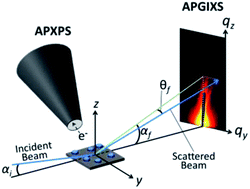
Faraday Discuss., 2022,236, 141-156
https://doi.org/10.1039/D1FD00123J
Characterization of buried interfaces using Ga Kα hard X-ray photoelectron spectroscopy (HAXPES)
HAXPES enables the detection of buried interfaces with an increased photo electron sampling depth.
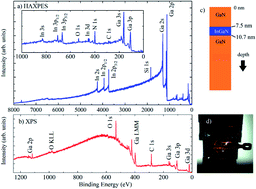
Faraday Discuss., 2022,236, 311-337
https://doi.org/10.1039/D2FD00021K
Selective hydrogenation of graphene on Ir(111): an X-ray standing wave study
Graphene on Ir(111) was hydrogenated selectively in the HCP and FCC regions by controlling the substrate temperature during exposure. Hydrogenated carbon in these areas both form ordered clusters, but are found to contribute to different components.
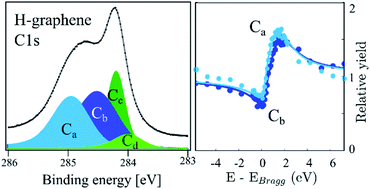
Faraday Discuss., 2022,236, 178-190
https://doi.org/10.1039/D1FD00122A
Identifying chemical and physical changes in wide-gap semiconductors using real-time and near ambient-pressure XPS
The temperature-dependence of photoemission from a gold alloy, n-type β-Ga2O3 and p-type diamond reveals reversible and irreversible changes in energy, due to changes in surface chemistry, band-bending, thermal expansion and a surface photovoltage.
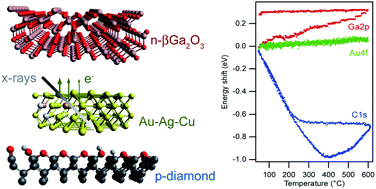
Faraday Discuss., 2022,236, 191-204
https://doi.org/10.1039/D1FD00119A
Time-dependent photoemission from droplets: influence of size and charge on the photophysics near the surface
Time-resolved photoemission spectroscopy is used to study the photophysics of droplets containing dioctyl phthalate. Long-lived excited states survive longer at lower phthalate concentrations, and in larger or electrically charged droplets.
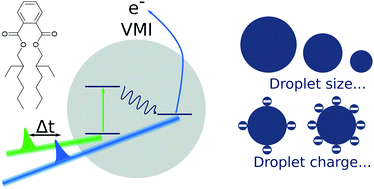
Faraday Discuss., 2022,236, 461-484
https://doi.org/10.1039/D1FD00108F
In situ surface analysis of palladium–platinum alloys in methane oxidation conditions
Pd and Pd–Pt alloys are studied with NAP-XPS under methane oxidation conditions. Pd–Pt catalysts showed greater resistance to oxidation under reaction conditions, with this coupled to surface restructuring and Pt migration away from the surface.

Faraday Discuss., 2022,236, 157-177
https://doi.org/10.1039/D1FD00113B
Predicting core electron binding energies in elements of the first transition series using the Δ-self-consistent-field method
We have used the ΔSCF method for calculating TM 2p3/2 core electron binding energies in compounds of first row transition metals. After correcting for element dependent systematic errors, the MAE of the calculated binding energies is just 0.20 eV.

Faraday Discuss., 2022,236, 364-373
https://doi.org/10.1039/D1FD00103E
Photo-induced lattice distortion in 2H-MoTe2 probed by time-resolved core level photoemission
The optical excitation of a 2H-MoTe2 crystal leads to a lattice deformation in the out-of-plane direction which has a lifetime of about 600 ps. The atomic displacement results in a transient binding energy shift of the Te 4d core level.

Faraday Discuss., 2022,236, 429-441
https://doi.org/10.1039/D1FD00105A
Surface photovoltage dynamics at passivated silicon surfaces: influence of substrate doping and surface termination
We have monitored the temporal evolution of the band bending at controlled silicon surfaces after a fs laser pump excitation.
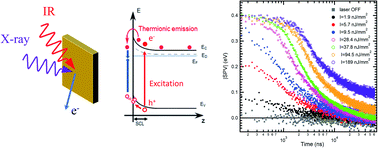
Faraday Discuss., 2022,236, 442-460
https://doi.org/10.1039/D1FD00107H
Resonant X-ray photoelectron spectroscopy: identification of atomic contributions to valence states
We demonstrate the validity of using valence resonant X-ray photoelectron spectroscopy to identify atomic contributions for both solutes and solvents.
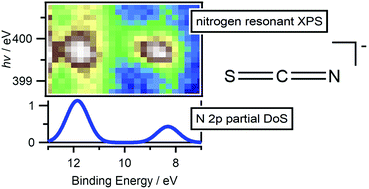
Faraday Discuss., 2022,236, 389-411
https://doi.org/10.1039/D1FD00117E
The rise of electrochemical NAPXPS operated in the soft X-ray regime exemplified by the oxygen evolution reaction on IrOx electrocatalysts
Different operando approaches based in PES were used and compared under OER conditions on IrOx. ResPES indicates that single coordinated oxygen atoms (μ1-O) are the active species yielding the formation of peroxo (μ1-OO) and finally O2 as product.
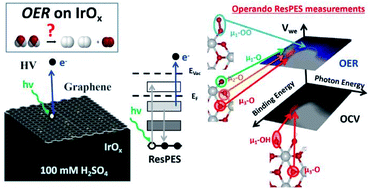
Faraday Discuss., 2022,236, 103-125
https://doi.org/10.1039/D1FD00114K
Dynamics over a Cu–graphite electrode during the gas-phase CO2 reduction investigated by APXPS
We use ambient pressure X-ray photoelectron and absorption spectroscopies coupled with on-line gas detection to investigate in situ performance and interface chemistry of an electrodeposited Cu on a carbon support under conditions of CO2 reduction.
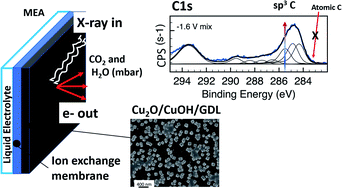
Faraday Discuss., 2022,236, 126-140
https://doi.org/10.1039/D1FD00121C
Aligning time-resolved kinetics (TAP) and surface spectroscopy (AP-XPS) for a more comprehensive understanding of ALD-derived 2D and 3D model catalysts
We propose a strategy for time-resolved measurements that can provide quantitatively reconciled spectroscopic (AP-XPS) and kinetic (TAP) information about catalytic reactions on tailored 2D and 3D model materials prepared via Atomic layer deposition (ALD).

Faraday Discuss., 2022,236, 485-509
https://doi.org/10.1039/D1FD00120E
Photoelectron spectra of water and simple aqueous solutions at extreme conditions
We present calculations of the photoelectron spectra of water and a simple solution of NaCl under pressure at conditions relevant to the Earth’s interior (11 GPa and 1000 K).
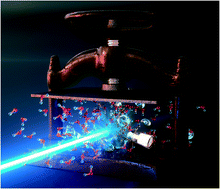
Faraday Discuss., 2022,236, 352-363
https://doi.org/10.1039/D2FD00003B
Gently does it!: in situ preparation of alkali metal–solid electrolyte interfaces for photoelectron spectroscopy
In situ deposition is critical to studying interfacial reactions between alkali-metals and solid electrolytes. The species formed on Li6PS5Cl are found to vary with deposition method, with impingement of more energetic atoms causes physical damage.

Faraday Discuss., 2022,236, 267-287
https://doi.org/10.1039/D1FD00118C
New directions in the analysis of buried interfaces for device technology by hard X-ray photoemission
In this review, the status of hard X-ray photoelectron spectroscopy (HAXPES) implemented with chromium Kα excitation (5.414 keV) and applied to technological research in nanoelectronics is presented.
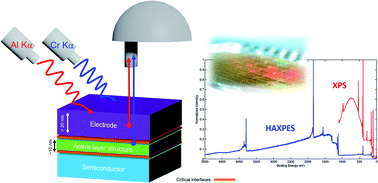
Faraday Discuss., 2022,236, 288-310
https://doi.org/10.1039/D1FD00110H
Understanding methanol dissociative adsorption and oxidation on amorphous oxide films
Methanol oxidation on amorphous aluminum-transition metal oxides: active sites, intermediates, and support effects via photoelectron spectroscopy and mass spectrometry.
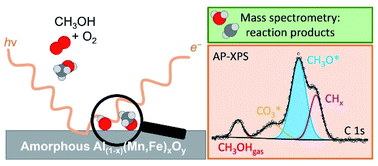
Faraday Discuss., 2022,236, 58-70
https://doi.org/10.1039/D1FD00109D
Oxygen relocation during HfO2 ALD on InAs
In situ and time-resolved APXPS reveals the initial ALD process beyond the standard ligand exchange model, resulting in native oxide-free InAs/HfO2 interfaces for high-speed MOSFET.

Faraday Discuss., 2022,236, 71-85
https://doi.org/10.1039/D1FD00116G
Localized X-ray photoelectron impedance spectroscopy (LoXPIS) for capturing charge dynamics of an ionic liquid electrolyte within an energy storage device
XPS data recorded under AC modulation together with simulations allows extraction of impedance-type information.

Faraday Discuss., 2022,236, 86-102
https://doi.org/10.1039/D1FD00102G
Corrosion inhibition in acidic environments: key interfacial insights with photoelectron spectroscopy
XPS spectra demonstrate that the chemistry of well-inhibited carbon steel interfaces, formed through sorption of organic surface-actives, is acid dependent.
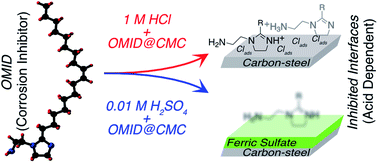
Faraday Discuss., 2022,236, 374-388
https://doi.org/10.1039/D1FD00106J
In situ methods: discoveries and challenges: general discussion
Faraday Discuss., 2022,236, 219-266
https://doi.org/10.1039/D2FD90025D
Buried interfaces: general discussion
Faraday Discuss., 2022,236, 338-351
https://doi.org/10.1039/D2FD90026B
Time resolved surface analysis (kinetic and molecular time scales): general discussion
Faraday Discuss., 2022,236, 510-527
https://doi.org/10.1039/D2FD90029G
Future directions: general discussion
Faraday Discuss., 2022,236, 412-428
https://doi.org/10.1039/D2FD90027K
About this collection
We are delighted to share with you a selection of the papers associated with a Faraday Discussion on Photoelectron spectroscopy and the future of surface analysis. More information about the related event may be found here: http://rsc.li/photoelectron-fd2022 . Additional articles will be added to the collection as they are published. The final versions of all the articles presented and a record of the discussions will be published after the event.
Technical advances in probing surface chemistry with photoelectron spectroscopy under ambient pressures and at buried interfaces enables us to capture information on the chemical state under conditions close to real life applications. Meanwhile time-resolved XAS and XES provide the capability of capturing snapshots of the electronic structure of surface states in the femtosecond time regime allowing us to probe reaction pathways with unprecedented precision. There is also a transformation in access to these techniques. These new approaches are changing our understanding of surface chemistry in an extremely diverse range of applications, from device manufacture to in-vivo sensing to catalysis. It is very timely to consider this new knowledge emerging and explore the potential applications of these tools to other areas. The meeting will cover 4 main themes: In-situ methods: discoveries and challenges, Buried interfaces, Time resolved surface analysis (kinetic and molecular timescales) and Future directions.
On behalf of the Scientific Committee, we hope you join us and participate in this exciting event, and that you enjoy these articles and the record of the discussion.